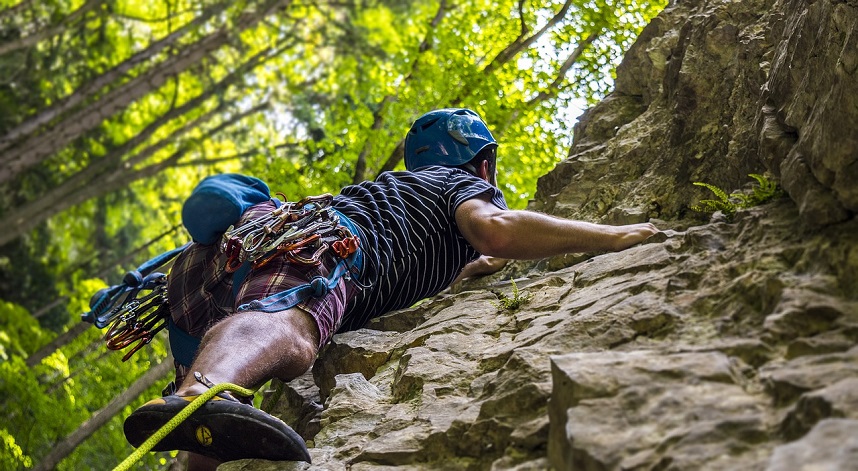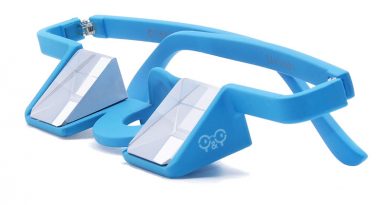Are you looking for a comfortable climbing harness?
With so many options on the market, many climbers find it difficult knowing where to start.
If you’re in this position, don’t worry.
Today, I’m going to talk about the differences between men’s and women’s climbing harnesses so that you can be better equipped to find the harness that’s right for you.
Below, we’ll walk through some of the most common differences between these two types of harnesses, as well as answer some of the most important questions you may have.
In the end, you’ll be equipped with information that can help you select the harness that’s right for you.

Parts of the Climbing Harness
To understand these differences, one must first be familiar with the anatomy of a climbing harness.
For simplicity, we’ll only be discussing two parts of the harness: the waist belt and the leg loops. Though other parts of the harness exist, they typically don’t affect the overall design for either gender.
Let’s take a closer look at the abovementioned parts before examining the difference between men’s and women’s harnesses.
The Waist Belt
Chances are that you’ve already guessed what the waist belt is for just by looking at its name.
The waist belt wraps around a climber’s waist to secure the device. Climbers often choose to wear their waist belt between their belly buttons and their waists—depending on where the fit is most comfortable.
Typically, manufacturers add padding to the waist belt to make it more comfortable. When buying a climbing harness, climbers prioritize comfort so that they can obtain the most flexibility while climbing.
For this reason, choosing a harness with a comfortable waist belt allows climbers to have easier and more-involved climbs.
Leg Loops
Leg loops work to secure the harness by strapping it across an individual’s legs.
Manufacturers design leg loops to be adjustable, making it easier for climbers to find harnesses that fit.
They also tend to add padding to the area so that the straps don’t cause chafing and other forms of discomfort.
Differences Between Men’s and Women’s Harnesses
We can use this information to highlight the difference between men’s and women’s climbing harnesses.
For starters, let’s examine one more term critical to distinguishing the two: the rise.
The rise refers to the length of the distance between the waist belt and the leg loops.
On the other hand, men’s harnesses typically come in a straight design with a much-shorter rise.
Notably, both types of harnesses come in different sizes, so the length of the rise varies even within these categories.
That being said, manufacturers typically design these gender-specific harnesses with average body shapes in mind.
So, why is a larger rise important for female harnesses?
So, why is a larger rise important for female harnesses?
The answer is simple.
Without this accommodation, many women would find their leg loops to be uncomfortably high. In fact, leg loops would likely start digging into the crotch and cause great irritation.
This usually leads women’s harnesses to having a larger belay loop, as well.
Additionally, women’s harnesses typically come in smaller sizes and feature smaller waist belts.
But not all differences result from anatomy.
Some women have even complained that the number of loops in general on their harnesses is lower than that for men.
Generally speaking, however, this likely depends on the brand and the style one buys. Different harnesses for both genders typically include various numbers of loops.
For this reason, it’s important that those looking to buy a harness simply remember the following two differences between the harnesses:
- Female harnesses tend to feature smaller waist sizes
- Female harnesses boast a longer rise to accommodate for larger hips
Understanding these differences can help point you in the right direction when selecting a climbing harness.
But is there more to the story?
Which Harness Should I Buy?
This sounds like a trick question.
Men buy men’s harnesses, and women buy women’s harnesses.
Right?
Not necessarily.
The answer often proves just a little more complicated than that.
The good news is that this actually makes it easier for climbers to get a harness that’s right for them.
Confused?
Let me explain.
Manufacturers design harnesses with general body shapes in mind. Because of this, they don’t come in a “one-size-fits-all” pattern.
What I mean by this isn’t that all harnesses don’t come in the same size—that’s a no-brainer. Instead, the important takeaway here stems from the fact that not all women’s harnesses fit women and not all men’s harnesses fit men.
So what does this mean for you?
Men who find a woman’s harness more comfortable, for instance, need not feel ashamed. The same proves true in reverse.
A climber’s main focus remains the safety and the comfort of the climb. If a particular harness provides for greater comfort, less chafing, and more-natural movements, it’s the right investment.
For this reason, finding the right harness often requires one to try on a wide selection.
So, what does it boil down to?
Several differences exist between men’s and women’s climbing harnesses.
From the length of the rise to the shape of the harness, these differences impact each harness’s overall comfort.
While individuals typically find harnesses of their gender to be most suitable, exceptions to this rule do exist.
For this reason, choosing a harness based on comfort often proves more important than choosing one based on gender.
For those having trouble finding a comfortable harness, consider trying a harness designed for the opposite gender.
For men, this means trying on women’s harnesses, and for women it means the opposite.
Ultimately, finding the right harness for you facilitates safer and more comfortable climbs.






